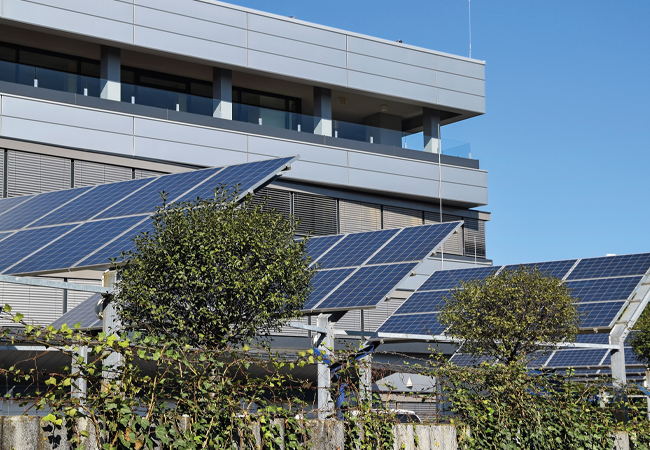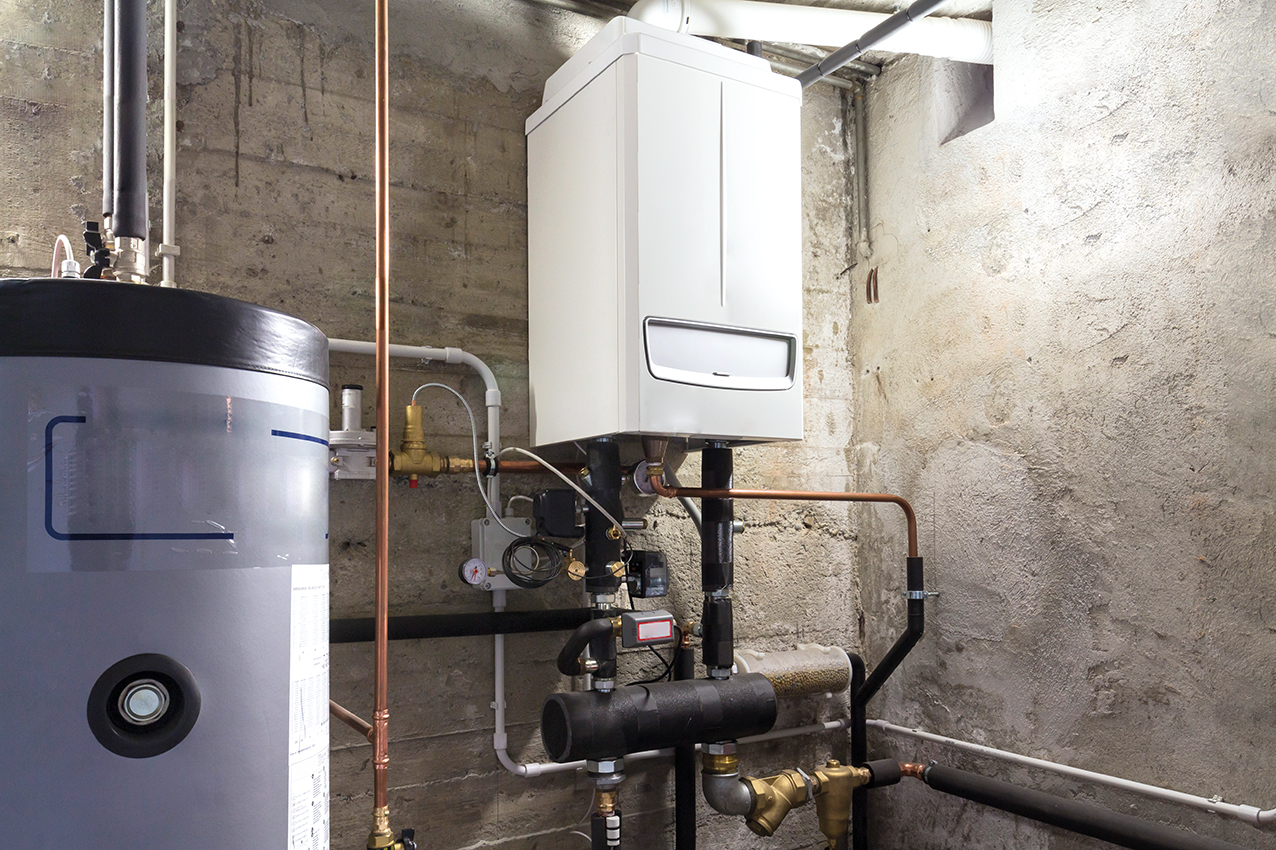
A CIBSE Homes for the Future Group debate at Hoare Lea, in September, highlighted a distinct division of opinion about the future of UK heat: all-electric or gas. However, with so many potential influences on the energy mix of the future, can the argument be so black and white?
The Committee on Climate Change’s Next steps for UK heat policy report, for example, identifies the need for a new strategy – including the use of hydrogen – and a stronger policy framework to enable building decarbonisation over the next three decades.
So we asked two speakers, representing both sides of the ‘electric/gas’ debate, to go head to head.
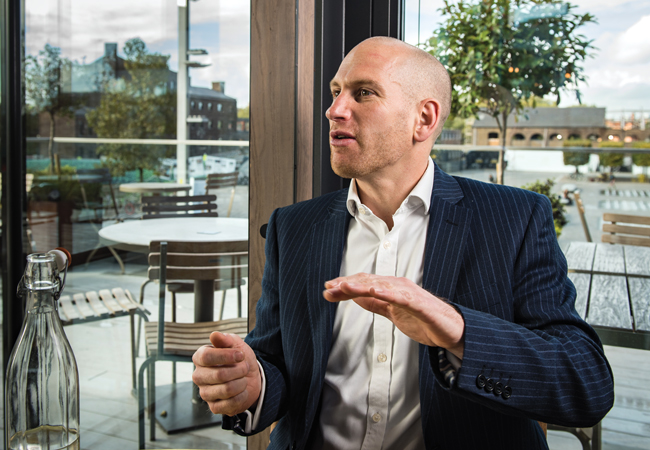
Barny Evans
Barny Evans (BE): Heat pumps (HPs) should provide the vast majority of space heating and domestic hot water (DHW) in the long term. HPs should be mandatory – or at least policy – for all new developments now, with a long-term plan for retrofitting them, combined with energy efficiency measures for our existing building stock.
Phil Jones (PJ): An entirely all-electric future is unlikely. I agree HPs will play a big part – and accept that an all-electric approach may be most likely in off-gas grid situations. But in high-heat-density areas, such as cities, supplying heat via heat networks is going to be the way forward. District heating (DH) is an ‘enabling’ technology that allows the connection of much larger, more efficient plant, which can be easily maintained. In the next few years, that could be large, high-temperature HPs, combined with – or even driven by – combined heat and power (CHP).
BE: The need for energy efficiency is a benefit of all-electric solutions. Because they become more efficient at lower flow temperatures, they favour energy efficiency. CHP-led systems become less efficient as thermal demand drops, so they are very resistant to energy efficiency measures. A truly competitive market is taking shape in the power sector and, provided we are all-electric, we can benefit. (See our white paper at bit.ly/2ep4Vvf).
PJ: Some big factors will slow down the move to all-electric. First, consumers love boilers, and radiators to warm their bums on. Second, changing attitudes will be difficult – heating installers are heavily incentivised to sell boilers. A boiler sold in 2020 could keep going until 2035-40. This won’t prevent a decarbonised future, but it will be an uphill struggle. Third, there is a lack of infrastructure. Even if we assume future HPs have a coefficient of performance (COP) of 4, with some reduction in demand, we still need an electricity grid that is twice as big as we have now – and that’s excluding electric vehicle consumption. I can’t see the gas grid disappearing entirely and the electricity grid doubling – or tripling – in size.
BE: Recent reports have shown that, over a lifetime, the lowest carbon option is heat pumps; the next lowest is gas boilers; and the highest is a CHP system. This is why there is no place for gas CHP in our system; even if you don’t accept the all-electric option, a standard gas boiler and mains electricity is lower carbon than a CHP.
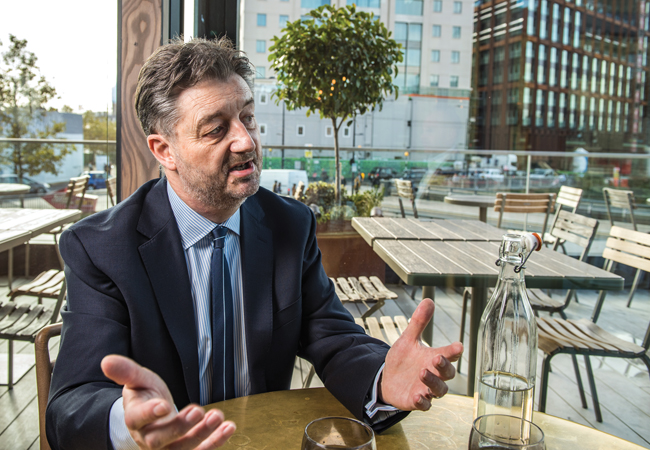
Phil Jones
PJ: Your hierarchy is based on today’s grid factors, but the future is hard to predict. If you can assume the electricity grid decarbonises, why can’t we assume the gas grid does too? I agree natural gas will have to fall away as a fuel, but other gases are available – syngas, anaerobic, biomass gasification and landfill, to name a few – before hydrogen comes along.
BE: My understanding is that no-one thinks the decarbonisation of our gas grid is realistic – at least in the short term. The realistic limit at the moment is about 10%. CHP systems or boilers could become low/zero carbon only if we develop new methodology for generating zero carbon natural gas – such as an algae.
PJ: It is highly unlikely the companies that own/operate the gas grid will throw away that asset easily. They will find other things to put into it – perhaps hydrogen. The ingenuity of engineers will bring a decarbonised gas grid.
Let’s consider a future in which the gas grid is a near-zero carbon option. That means CHP will still play a part in the mix, running – for example – on hydrogen, and producing local electricity without the high transmission losses of the electricity grid. It opens up real opportunities for fuel cell CHP running on hydrogen directly, without the need for a reformer to convert natural gas to hydrogen. Local CHP is at least 80-85% efficient, as it provides/uses both the heat and power. We will probably never build power stations near cities, where we need heat. So local CHP will always be an option if power stations – even nuclear – throw away heat.
A recent KPMG report argued that hydrogen could be feasible, and a study in Leeds is working to develop a pilot for a local hydrogen grid. So the decarbonisation of the gas grid is starting. Biogass and syngas production/injection may start the process, but lead to a hydrogen-based gas grid.
Some big factors will slow down the move to all-electric. First, consumers love boilers, and radiators to warm their bums on
BE: I am a fan of hydrogen in that it offers the opportunity for inter-seasonal energy storage, which should be used through standard hydrogen power stations and then fed as electricity. Replacing mains gas in our network would mean changing every appliance at the same time, including the CHP engines that have been – or are being – installed.
The other issue with hydrogen is that it only helps with CO2 emissions if it is generated from renewable energy – which means you must have had the renewable electricity/heat to make it in the first place. If you just use gas through steam methane reforming, or electricity through electrolysis, you haven’t gained anything – apart from a reduction in local air pollution, which electricity already gives you.
PJ: The previous change – from town gas to natural gas – shows it is possible. But what if the decarbonised gas grid only supplied certain larger, local loads? Simply focusing on a totally HP world closes out all sorts of other options and opportunities. If you are saying DHW will be all-electric from HPs, then anything more than 3.5 COP is optimistic – unless you go large and put them on heat networks. Also, will consumers want cooking to be all-electric? Social factors will influence energy supply.

BE: We may end up with a zero carbon gas grid or zero carbon hydrogen. If we do, then CHP systems would become low/zero carbon – but so would an all-electric system, which can use both gas and hydrogen in power stations to generate zero carbon electricity. An all-electric system is future-proof in any scenario, whereas any CHP/gas system is dependent on something that may never happen.
PJ: The electricity grid has been decarbonising fast, but much of that is a ‘dash for gas’, away from coal. How will it decarbonise the rest? It will get harder and harder to reach a 100% zero carbon grid. It is more likely that a range of supply systems and local technology will decarbonise. HPs will be a big part of the heat-generation – and cooling – landscape, but our future will never be all-electric.
BE: A standard Worcester-Bosch gas boiler and mains electricity is lower carbon than a CHP. On this basis, with regard to DH networks, we can leave it to the project engineers to decide if there is a reliable source of heat that would improve the performance of an HP sufficiently to justify the expenses and losses on the network – and loss of choice for the consumer.
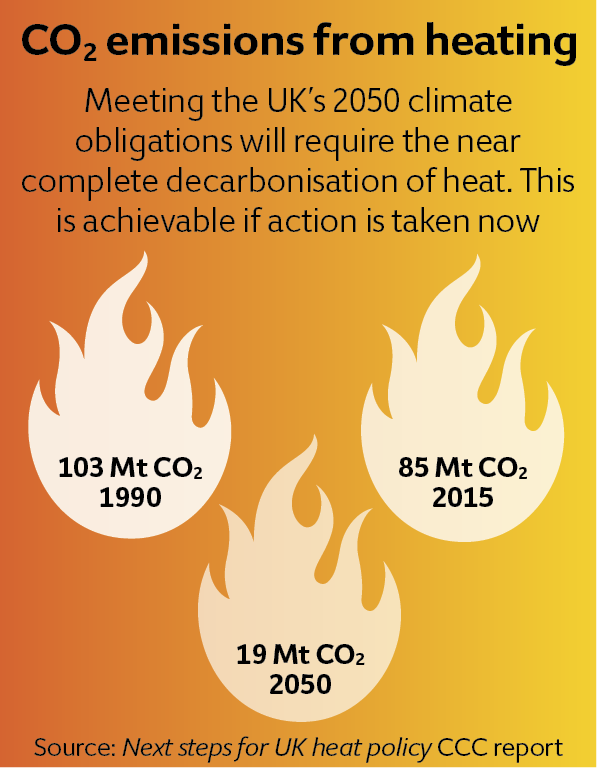
PJ: Cities will be a heat network-based solution; you can put any technology on the front end – fuel cells, CHP, solar water, energy from waste – and supply low carbon heat to any type of demand or building. Copenhagen is supplying 98% of its heat via DH.
The off-gas grid areas are probably going to be an all-electric heat pump world; the suburbs will be a mix; and – where the conurbations are heat-dense enough – a heat network is a good approach. Heat networks could wean installers and consumers off individual gas boilers.
BE: In the new-build sector, particularly in cities, we face three major issues: CO2 emissions, overheating and air quality. HPs address all of these.
PJ: Where larger, local CHP displaces individual boilers, it can result in improved emissions overall, through better efficiency and dispersal. On a national scale, local CHP at 80-85% efficiency results in fewer emissions than power stations. The decarbonising electricity grid provides an air quality benefit locally, but not nationally. However, if the gas grid decarbonises, perhaps it’s equal all round.
BE: Our cities have a major air-quality issue. This is why we should keep combustion out of urban areas. I propose a compromise:
- Don’t change the heating in existing developments, but agree a programme of energy efficiency. Decide whether/how to change them to a decarbonised gas system, all-electric, hydrogen or other when/if these things are available
- New developments should be all-electric. With very little need for space heating, they don’t create a massive increase in electrical demand, and we are only building at about 1% of our stock per year
- No CHP engines or other gas systems to be deployed until we have decarbonised the gas grid/converted it to hydrogen.
PJ: I agree we should put energy efficiency first, but that is proving an uphill struggle, with electricity consumption in buildings rising. In existing high-heat-density areas, heat networks allow technology to be changed/connected. And CHP is still going in for cost-saving reasons; this saving can help fund the heat networks that enable future supply.
If a heat network exists – or there’s a local heat density that suggests a heat network – a new-build should connect. Unfortunately, cost is king – and that is driving CHP right now. But in 5-10 years’ time, my guess is city-wide DH, supplied by a combination of CHP and HPs – it’s all in the mix!
- Barny Evans MCIBSE is associate for energy and sustainable development at WSP Parsons Brinckerhoff, and Phil Jones FCIBSE is an energy consultant and CIBSE CHP/DH Group chair





